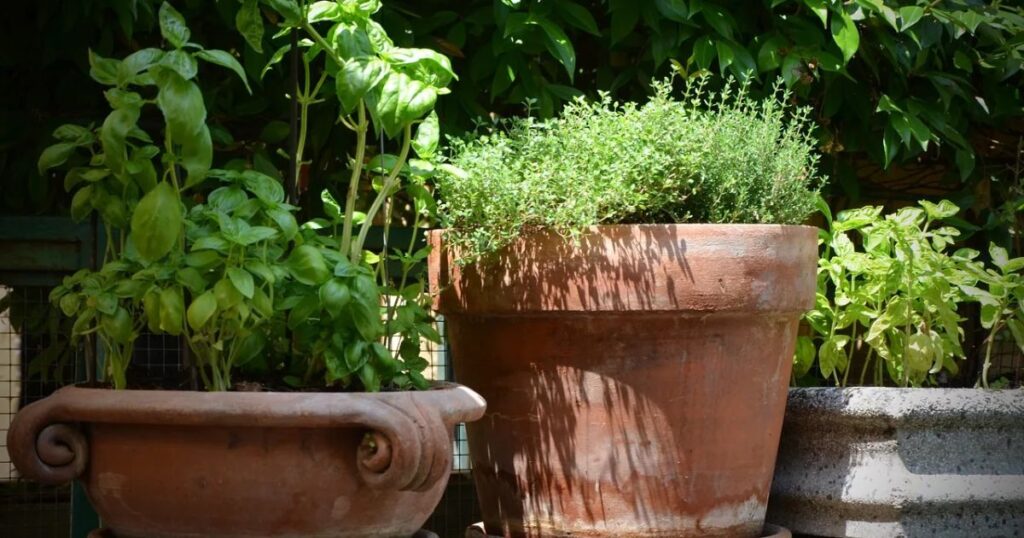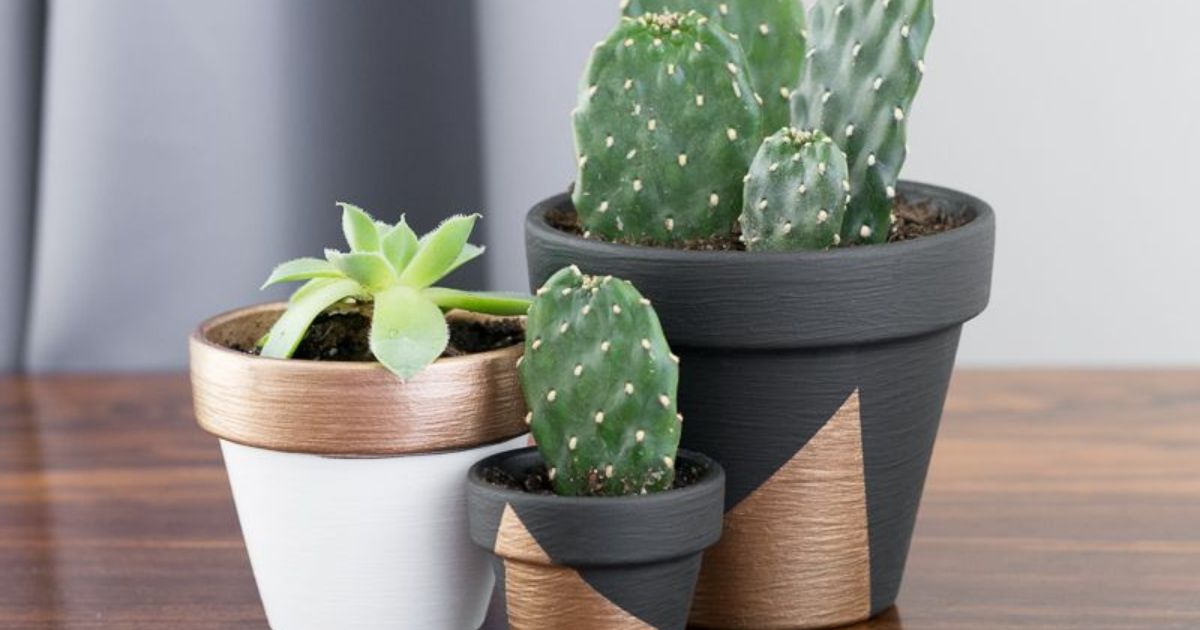Succulents, a diverse group of water-retaining plants known for their unique and captivating appearance, thrive in well-draining soil. The concept of “Succulents Need A Drain Hole?” revolves around the essential need for these plants to be potted in containers equipped with drainage holes.
Do Succulents Need A Drain Hole? This question beckons a crucial consideration for plant enthusiasts and novices alike. The presence of a drain hole in the container housing succulents is not merely a matter of preference; it is a fundamental requirement for the well-being of these resilient plants.
Ensuring the presence of a drain hole in the container is a key aspect of succulent care. Succulents, adapted to arid environments, store water in their fleshy leaves and stems. However, their ability to withstand drought is paired with a vulnerability to overwatering. The Succulents Need A Drain Hole? principle highlights the importance of preventing water stagnation.
How to Plant Succulents in Pots Without Drainage Holes

Planting succulents in pots without drainage holes requires careful consideration, especially when exploring alternative watering methods like bottom watering succulents. To prevent waterlogged soil, a condition detrimental to succulents, start by layering the bottom of the pot with coarse materials such as pebbles or broken pottery pieces.
This not only aids in creating a makeshift drainage system but also sets the stage for an effective bottom watering technique. The strategic use of these materials allows for controlled water absorption, contributing to the overall health and well-being of your succulents in pots without traditional drainage.
Use a well-draining succulent mix to ensure proper aeration. Additionally, be mindful of watering frequency, as overwatering becomes a more significant risk in pots without drainage. Allow the soil to dry out between watering sessions to promote the health of your succulents.While the lack of drainage holes presents a challenge, proper planting techniques can mitigate potential issues. It’s essential to strike a balance between providing adequate moisture and preventing water accumulation, ensuring your succulents thrive in their pot environment.
Do Succulent Pots Need Drainage?
The question of whether succulent pots need drainage is a crucial consideration for succulent enthusiasts. Succulents are highly susceptible to root rot, and adequate drainage is key to preventing this common issue. Without drainage, excess water can pool at the bottom of the pot, leading to soggy soil conditions that compromise the health of the succulent’s roots. It’s recommended to choose pots with drainage holes to mimic the arid conditions that succulents naturally thrive in.
This simple adjustment can make a significant difference in the long-term well-being of your succulent plants.For optimal succulent care, prioritize pots with drainage holes to safeguard against overwatering and root rot. The balance between moisture and aeration is critical for the successful cultivation of these unique plants.
How to Plant Succulents in Pots Without Holes
Planting succulents in pots without holes demands a strategic approach to ensure the well-being of your plants. Begin by creating a drainage layer at the pot’s base, using materials like gravel or perlite. Choose a well-draining soil mix specifically formulated for succulents to enhance aeration and prevent waterlogging.
When planting, be mindful of water application, allowing the soil to absorb moisture gradually. Monitoring the soil’s moisture levels and adjusting your watering routine accordingly is essential for maintaining a healthy environment for your potted succulents.White pots without drainage holes may pose challenges, following these steps can help create a suitable habitat for succulents, fostering their growth and longevity.
How to Water Succulents Without Drainage
Watering succulents in pots without drainage requires a careful approach to avoid water-related issues. Opt for a watering method that ensures moisture reaches the roots without causing water accumulation. Use a spray bottle or a carefully measured watering can to deliver water directly to the soil’s surface, allowing for controlled absorption.
Monitor the soil’s moisture levels closely and adjust your watering frequency based on the specific needs of your succulents. This proactive approach helps prevent overwatering and promotes a healthy balance for your potted succulents.When navigating the challenge of watering succulents in pots without drainage, precision is key. Implementing a controlled watering routine ensures your succulents receive the hydration they need without compromising their well-being.
Can I Plant a Succulent Outside in a Pot Without Drainage?
Planting a succulent outside in a pot without drainage requires careful consideration of environmental factors. While outdoor conditions may offer better ventilation than indoor settings, the risk of waterlogging remains. Choose a well-draining soil mix and elevate the pot slightly to enhance air circulation.
Additionally, monitor rainfall levels and adjust your watering routine accordingly. Despite the lack of drainage holes, outdoor placement can provide a more forgiving environment for succulents, allowing excess water to evaporate more efficiently.While planting succulents outdoors in pots without drainage is feasible, proper precautions are crucial to ensure the plants’ health and longevity in their outdoor habitat.
Can Plants Grow Without Drainage Holes?
The ability of plants to grow without drainage holes depends on their specific needs and the care provided. While some plants tolerate stagnant water, succulents, in particular, thrive in well-draining conditions. Plants with high water requirements may struggle in pots without drainage, as excess moisture can lead to root rot. For species adapted to arid environments, like succulents, the absence of drainage holes becomes a more significant concern.
It’s advisable to choose pots with drainage for most plants, ensuring a healthier and more balanced growing environment.Understanding the unique requirements of each plant species is crucial when considering whether they can thrive in pots without drainage holes. While some plants may adapt, the absence of drainage poses a greater risk for many, especially those with lower tolerance for waterlogged conditions.
Pros of Growing Plants Without Drainage Holes
Growing plants without drainage holes offers certain advantages, particularly in controlling water distribution. This method allows for more precise watering, preventing excess moisture from draining away quickly. It also enables the creation of a mini-habitat, promoting higher humidity levels around the plant.
Additionally, the controlled environment can be beneficial for plants that prefer consistently moist soil. While the absence of drainage holes requires careful attention to prevent water-related issues, it provides an opportunity for plant enthusiasts to experiment with different watering techniques and tailor the growing conditions to the specific needs of their plants.
For those willing to invest time and attention to detail, growing plants without drainage holes can be a rewarding experience, offering a higher level of control over the plant’s environment and water intake.
Table: Summary of Key Data
| Aspect | Importance for Succulents |
| Drainage Holes in Pots | Crucial |
| Risk of Root Rot | High without Drainage Holes |
| Recommended Soil Mix | Well-Draining for Succulents |
| Watering Technique | Controlled and Gradual |
| Outdoor Placement in Pots | Feasible with Precautions |
| General Plant Growth Without Drainage | Dependent on Species |
| Advantages of No Drainage Holes | Precision in Watering |
This table summarizes key data related to the importance of drainage holes, risks associated with root rot, recommended soil mix, watering techniques, outdoor placement considerations, general plant growth without drainage, and advantages of growing plants without drainage holes. Understanding these aspects is crucial for successfully cultivating plants, especially succulents, in pots with or without drainage holes.
FAQ’s
Can I plant succulents in pots without drainage holes?
Yes, you can, but it requires careful planning. Use well-draining soil, create a drainage layer, and monitor watering to prevent waterlogged conditions.
Do all succulent pots need drainage?
While not an absolute requirement, pots with drainage holes are highly recommended for succulents to avoid root rot and maintain optimal soil conditions.
How do I water succulents in pots without drainage?
Water carefully using a spray bottle or a measured watering can, allowing controlled absorption. Monitor soil moisture closely and adjust watering frequency as needed.
Is it possible to plant succulents outside in pots without drainage?
Yes, it’s possible, but elevate the pot for better air circulation, use well-draining soil, and be mindful of rainfall to prevent waterlogging.
Are there benefits to growing plants without drainage holes?
Yes, it offers more precise control over watering, prevents rapid drainage, and creates a controlled environment suitable for plants with specific moisture preferences.
Conclusion
In caring for succulents, the presence of a drain hole emerges as a vital factor, promoting a thriving environment that mirrors their natural habitat. The simple act of choosing pots with drainage holes ensures that excess water has an escape route, preventing waterlogged soil and safeguarding succulents from the perils of root rot. By understanding the importance of proper drainage, succulent enthusiasts can create a balanced and conducive setting for their plants to flourish.
In the world of succulent care, the question Do Succulents Need A Drain Hole? unveils a fundamental aspect that directly impacts the well-being of these resilient plants. From planting techniques to watering strategies, the absence or presence of a drain hole shapes the conditions in which succulents grow. So, whether indoors or outdoors, in pots with or without drainage, the journey of cultivating vibrant succulents is marked by the thoughtful consideration of their need for a proper escape for excess water.










